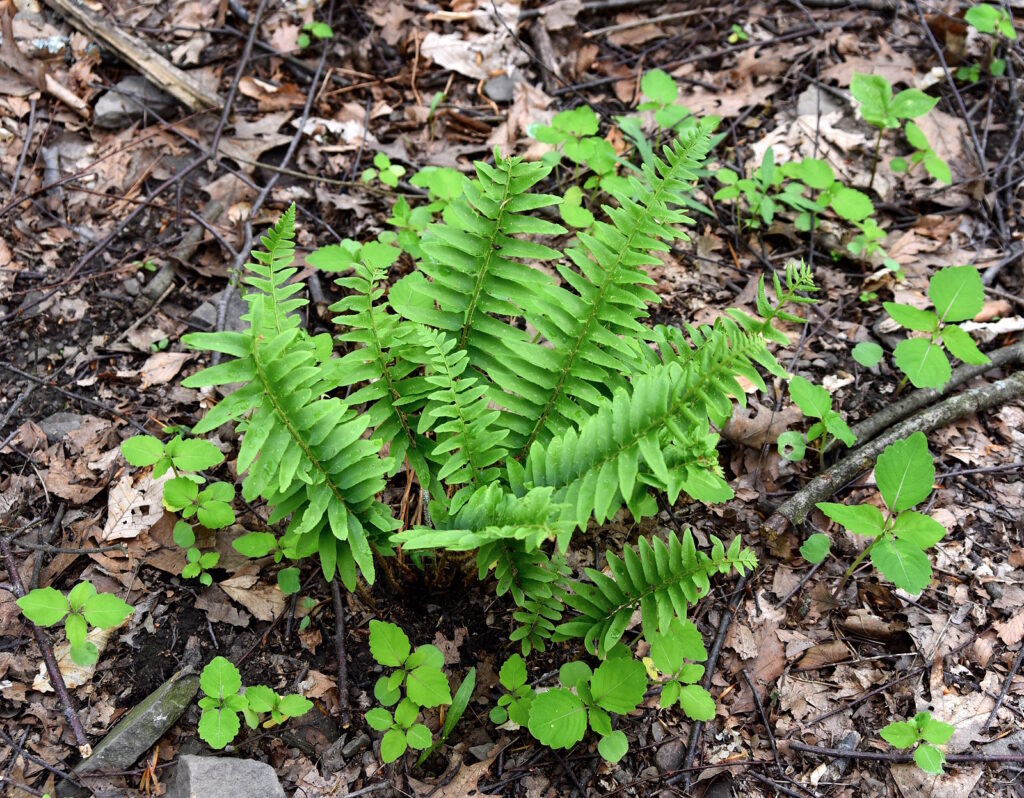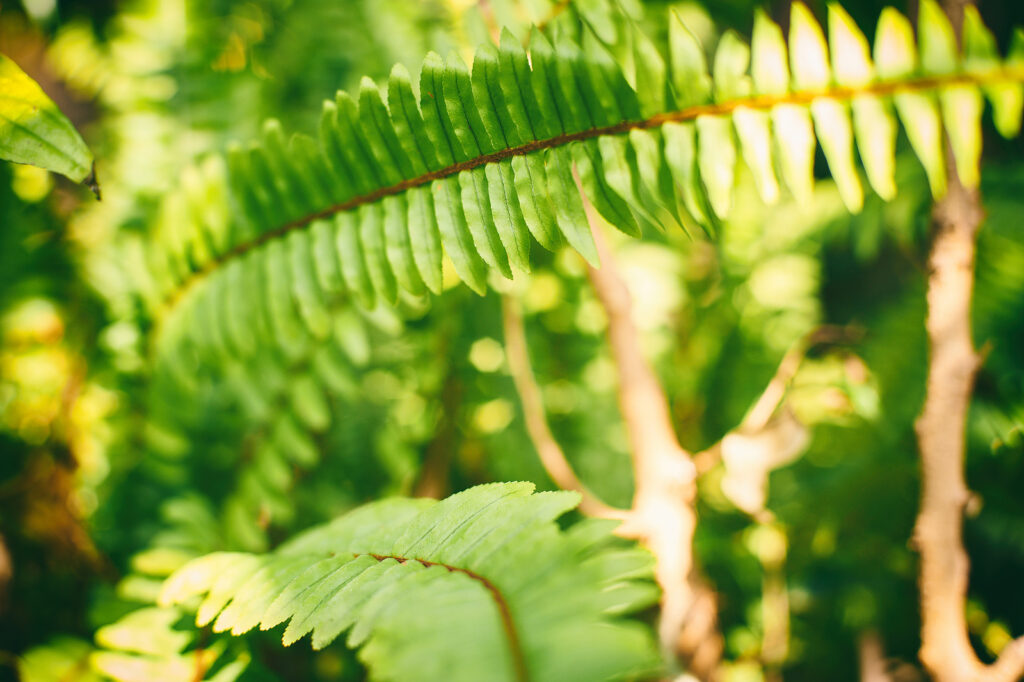Polystichum is a genus of ferns that includes the ferns commonly called shield fern and sword fern. Polystichum are hardy symmetrical plants with medium-size evergreen fronds. Polystichum are widely planted ferns that combine well with other plants and are easy to grow.
Polystichum are cultivated for their lance-shaped, pinnate fronds which arise from erect or short-creeping rhizomes. Polystichum have a shapely shuttlecock crown.
Plant Polystichum in shady beds under trees or along house walls and as a ground cover in mixed woodland plantings. Polystichum grow well in cool, temperature, or warm greenhouses or indoors.
Polystichum is a genus of about 200 species of evergreen ferns. Polystichum are native to a range of habitats from alpine cliffs to tropical foliage worldwide.

Get to know Polystichum
- Plant type: Evergreen, terrestrial fern
- Growing zones and range: Zones 4 to 10
- Hardiness: Hardy to Zone 4
- Height and width: 1-4 feet (.3-1.2m) tall or more
- Growth rate: Moderate
- Form and habit: Symmetrical, graceful, vase-shaped clumps
- Foliage: Often lance-shaped, pinnate to 3-pinnate fronds, which arise from erect or short-creeping rhizomes, usually in shapely, shuttlecock crowns; pinnae are sometimes lobed, each lobe ending in a sharp point or bristle
- Flowers: Sori are borne on the undersides of the fronds, each usually protected by a rounded indusium
- Uses: Rock garden, fernery, well-drained border, groundcover in a woodland setting, shady beds, along house walls, in mixed woodland plantings
- Garden companions: Combine well with other plants; pair with woodland perennials, such as Bergenia or corydalis
- Common name: Shield or sword ferns
- Botanical name: Polystichum
- Family name: Dryopteridaceae
- Origin: From alpine cliffs to tropical forests worldwide
Where to plant Polystichum
- Plant Polystichum in deep or partial shade.
- Plant Polystichum in rich, fertile, humus-rich, well-drained soil.
When to plant Polystichum
- Sow Polystichum at 59-61°F (15-16°C) when ripe.
- Plant container grown Polystichum in spring.

Planting and spacing Polystichum
- Space Western fern 3 feet (.9m) apart; Tassel ferns, 1 foot (.3m) apart; Christmas ferns, 2 feet (.6m) apart
How to water and feed Polystichum
- Give Polystichum regular water; keep Polystichum continuously moist.
- Feed Polystichum with an all-purpose organic fertilizer in spring.
How to care for Polystichum
- Remove dead fronds before new ones unfurl.
- The fronds of evergreen species usually become prostrate by early winter; either leave them in place from year to year or remove them in late winter before the new fronds unfurl.
- Remove brown foliage as new growth emerges.
Polystichum pests and diseases
- Pests and diseases are infrequent.
Polystichum propagation
- Divide Polystichum rhizomes in spring; detach fronds bearing bulbils in autumn.
- Divide clumps when crowded.
- Propagate by digging the plants in spring and carefully separating the rhizomes.

Polystichum varieties to grow
- Polystichum acrostichoides, Christmas fern, terrestrial, evergreen fern producing a shuttlecock of narrowly lance-shaped, pinnate, dark green fronds, 24 inches (60cm) long, with small pinnae. Fertile fronds narrow abruptly toward tips where sori occur. To 18 inches (45cm) tall and 36 inches (90cm) wide. Northeast North America, Europe, Asia.
- P. aculeatum, Prickly shield fern, Hard shield fern, native to Europe, grows 2-4 feet (.6-1.2m) tall. Glossy, firm, fairly upright, once- or twice-cut fronds; final segments are tipped by soft prickles. Pale young fronds make an attractive show against the dark green mature ones.
- P. braunii, Braun’s holly fern, semievergreen to deciduous. Natine to northern latitudes. Grows 1-3 feet (.3-.9m) tall, with twice-divided fronds. Silvery green new growth.
- P. munitum, Western sword fern, terrestrial, evergreen fern with narrowly lance-shaped, leathery, pinnate, dark green fronds, 36 inches (90cm) long or more, forming shuttlecocks. Pinnae are linear and spiny-toothed. Larger then P. acrostichoides, its fertile fronds do not narrow at the tips. To 36 inches (90cm) tall, rarely to 5 feet (1.5m) and 4 feet (1.2m) wide. Northwest North America.
- P. neolobatum, Long-eared holly fern, evergreen, slightly arching fern, with well-developed “thumb” or acropscopic auricle by the rachis. Stipe and rachis have abundant, deep brown, papery scales; blades are hard-textured, glossy, and bipinnate-lanceolate. To 24 inches (60cm) tall. Asia.
- P. polyblepharum, Japanese tassel fern, terrestrial, evergreen fern bearing shuttlecocks of spreading, lance-shaped, 2-pinnate, shiny, dark green fronds, 12-32 inches (30-80cm) longcovered with golden hairs when they unfurl. Pinnae lobes are oblong-ovate and have spiny-toothed margins. To 24-32 inches (60-80cm) tall and 36 inches (90cm) wide. South Korea, Japan.
- P. setiferum, Hedge fern, terrestrial, evergreen fern with soft, lance-shaped, 2-pinnate, dark green fronds, 12-48 inches (30-120cm) long, arranged in shuttlecocks. Pinnae lobes are ovate, bristle-toothed, stalked, and obtusely angled at the point of attachment to the midribs. To 4 feet (1.2m) tall and 36 inches (90cm) wide. Europe















